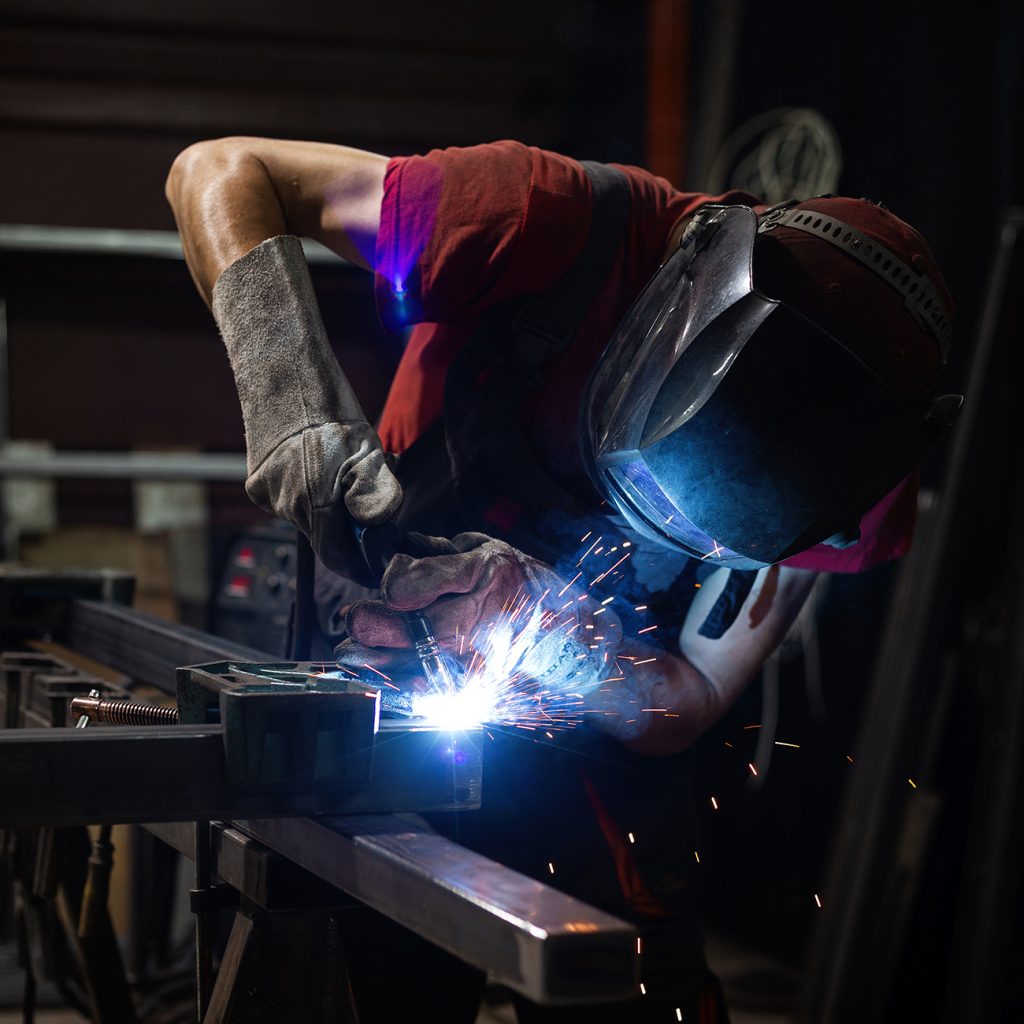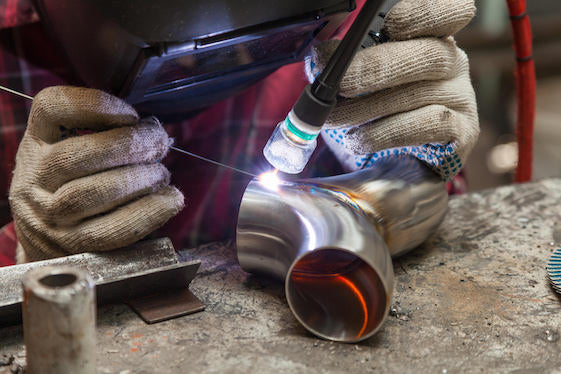Welding issues explained and solved by Montana Mobile Welding and Repair Belgrade Fabrication
Wiki Article
Everything about Welding: Key Insights Into Techniques and Best Practices for Success
Welding encompasses a range of methods, each fit for particular materials and applications. Comprehending these techniques, such as GMAW, SMAW, and TIG, is necessary for accomplishing optimal results. The best devices and safety practices can not be forgotten. As prep work and fixing play essential roles in the welding procedure, mastering these components can greatly boost the quality of the last product. What are the vital variables that assure a successful weld?Recognizing Different Welding Strategies
Welding methods encompass a selection of techniques, each matched to details applications and materials. Amongst one of the most typical strategies are Gas Steel Arc Welding (GMAW), Shielded Metal Arc Welding (SMAW), and Tungsten Inert Gas Welding (TIG) GMAW, likewise called MIG welding, is preferred for its speed and adaptability, making it excellent for thin materials. SMAW, or stick welding, is preferred for its simplicity and effectiveness in outside settings, especially with thicker steels. TIG welding offers accuracy and control, making it ideal for intricate job and non-ferrous metals (Montana Mobile Welding and Repair Fabrication). Each strategy has its one-of-a-kind benefits and factors to consider, enabling welders to select the most effective method based on the project's needs, product kind, and desired end results. Comprehending these methods is crucial for effective weldingNecessary Welding Equipment and Devices
While various welding techniques call for particular skills, the right devices and devices are similarly necessary for achieving high quality outcomes. Vital welding devices includes welding equipments, which differ depending upon the method-- such as MIG, TIG, or stick welding. Protective gear, consisting of aprons, gloves, and headgears, guarantees safety and comfort during the process. In addition, components and clamps help secure products in area, making certain precision in welds. Consumables like welding rods, cable, and shielding gas are also essential components that influence the high quality of the weld. Furthermore, tools such as grinders and cutters help with surface preparation and post-weld ending up, adding to a specialist result. Spending in premium equipment eventually improves the performance and effectiveness of welding jobs.Safety And Security Practices in Welding
Appropriate safety and security methods are vital in the welding market to protect workers from possible dangers. Welders have to wear ideal personal protective tools (PPE), including safety helmets with appropriate shading, handwear covers, and flame-resistant apparel. Appropriate ventilation is crucial to lower exposure to harmful fumes and gases generated throughout the welding process. In addition, employees should be trained in the right handling of welding devices to prevent crashes. Fire precaution, such as maintaining flammable products away from the welding location and having fire extinguishers readily available, are needed. Routine inspections of equipment and work spaces can aid determine possible threats before they bring about mishaps. By sticking to these security methods, welders can create a much safer working atmosphere and lessen threats associated with their profession.Readying Materials for Welding
Preparing materials for welding is a crucial action that considerably affects the quality and stability of the final item (Montana Mobile Welding and Repair Belgrade Welding). Correct prep work entails cleaning the surfaces to get rid of impurities such as corrosion, oil, and dust, which can endanger the weld. Methods such as grinding, sanding, or making use of solvents are commonly employed to accomplish a clean surface area. Additionally, making sure that the products mesh well is vital; spaces can lead to weak welds. It's also important to consider the placement and positioning of the parts, as this will affect the simplicity of welding and the last end result. Lastly, selecting the appropriate filler product and making certain compatibility with the base metals is go important for accomplishing solid, sturdy weldsTips for Achieving High-Quality Welds
Achieving top quality welds needs focus to detail and adherence to ideal methods throughout the welding procedure. Appropriate joint prep work is crucial, making sure surfaces are clean and totally free from impurities. Choosing the proper filler product and welding technique based upon the base metals is essential for excellent bonding. Preserving constant traveling speed and angle while welding can promote and avoid flaws harmony. Additionally, regulating warm input is essential; extreme warm can lead to bending and damaged joints. Routinely checking the welds throughout the process permits instant adjustments if necessary. Lastly, employing suitable post-weld treatments, such as cleaning and anxiety alleviation, can improve the sturdiness and stability of the weld, ultimately making sure an effective result.Repairing Usual Welding Issues
Welding often provides obstacles that can influence the quality and honesty of the final item. Common concerns such as porosity, irregular weld grains, and overheating can emerge, Look At This each needing details fixing strategies. Understanding these issues is crucial for welders to boost their skills and attain suitable outcomes.Porosity Problems Explained
Porosity can typically be ignored, it continues to be a vital issue in welding that can jeopardize the integrity of an ended up product. Porosity describes the presence of small gas pockets within the weld bead, which can deteriorate the joint and lead to early failing. This trouble normally emerges from contaminants, wetness, or inappropriate protecting gas protection during the welding procedure. To minimize porosity, welders should confirm that the base materials are clean and completely dry, make use of ideal securing gases, and keep consistent welding parameters. Regularly inspecting the devices and atmosphere can also help identify prospective issues prior to they manifest in the weld. Addressing porosity properly is vital for accomplishing solid, long lasting welds that satisfy high quality standards.
Irregular Weld Beans
Inconsistent weld grains can substantially affect the high quality and toughness of an ended up item. Numerous aspects add to this concern, consisting of inappropriate traveling rate, inaccurate amperage settings, and irregular electrode angles. When the welder relocates too quickly, a bead might show up slim and lack penetration, while moving also gradually can create too much buildup. Additionally, utilizing the wrong amperage can cause either undercutting or too much spatter, both of which concession weld integrity. check my reference The welder's technique, such as irregular lantern activity, can likewise bring about irregular grain look. To minimize these issues, welders ought to focus on keeping steady, regulated activities and making certain correct tools setups to accomplish harmony in their welds. Uniformity is essential to accomplishing solid and dependable welds.Overheating and Warping Issues
Extreme warmth throughout the welding process can cause substantial overheating and deforming issues, impacting the architectural integrity of the workpiece. These troubles typically materialize as distortion, which can endanger placement and fit-up, making further assembly challenging. Elements adding to overheating consist of the selection of welding specifications, such as voltage and travel rate, in addition to the kind of material being bonded. To minimize these problems, welders need to keep consistent traveling rate and ideal heat input while keeping an eye on the workpiece temperature. Furthermore, pre-heating or post-weld warm therapy can aid relieve stresses created by quick cooling - Montana Mobile Welding and Repair Belgrade Fabrication. Regular assessment and adherence to ideal methods are crucial in preventing overheating and making certain the durability and integrity of bonded structuresFrequently Asked Concerns
What Are the Career Opportunities in the Welding Market?
The welding sector uses varied job possibilities, including positions as welders, engineers, instructors, and assessors. Experts can operate in manufacturing, building and construction, aerospace, and vehicle industries, taking advantage of strong demand and affordable incomes in various functions.How Can I Enhance My Welding Rate Without Compromising Top Quality?
To improve welding rate without sacrificing high quality, one must exercise efficient strategies, maintain devices, maximize settings, and improve hand-eye sychronisation. Normal training and looking for feedback can likewise substantially add to attaining faster, top quality welds.What Accreditations Are Readily Available for Welders?
Many qualifications exist for welders, including those from the American Welding Culture (AWS), the National Center for Building Education and Research (NCCER), and various industry-specific companies. These credentials enhance employability and show ability effectiveness.How Does Welding Influence the Qualities of Metals?
Welding influences the buildings of metals by altering their microstructure, which can lead to adjustments in ductility, stamina, and solidity. Warm input and cooling prices during the process considerably influence these material characteristics.Can I Bonded Dissimilar Metals Together?

Report this wiki page